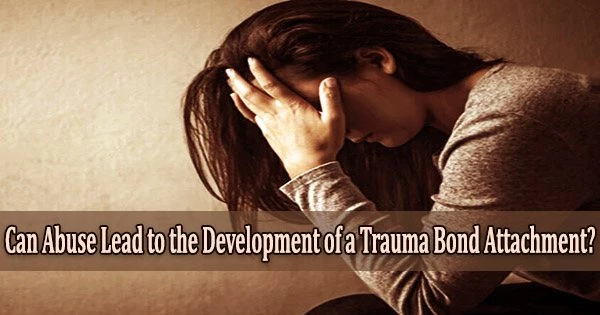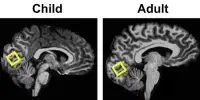In Stockholm, Sweden, four bank employees were abducted and kept prisoner for about a week in 1973. None of the victims offered to testify against their captors after being freed; instead, they raised funds for the defense of their former captors. Nils Bejerot, a Swedish criminologist and psychiatrist, was brought in by perplexed police to investigate the incident and the victim’s replies.
Bejerot characterized the event as a type of brainwashing and gave the phenomena the name “Stockholm syndrome” in reference to the bank where the hostages were being kept.
The term “Stockholm syndrome” was coined to describe a phenomena in which captives grew fond of and attached to their captors, empathizing with their objectives, and even resisting or obstructing attempts by law enforcement to carry them out. An ex-police crisis negotiator once revealed to me that they occasionally urged hostage-takers to eat with their captives in an effort to stimulate the formation of ties that might serve to safeguard the hostages.
In 1997, Patrick Carnes, the psychologist who largely created the modern sex addiction treatment and codependency industries, described the term “trauma bonding” to explain why some people remain in destructive, abusive relationships with people who are treating them in unhealthy, traumatizing ways.
Carnes suggested that trauma bonds were dysfunctional attachments that occur in the presence of danger, shame, or exploitation. He referenced depictions of unhealthy relationships such as in the movies War of the Roses or Fatal Attraction, and even mentioned the strange relationship between Lucy and Charlie Brown in the comic strip Peanuts to describe how people can keep relying on others who constantly betray them.
In his essay, mentions the forms of emotional bonds developed by people in hostage situations, though he doesn’t specifically reference Stockholm syndrome, it seems clear he’s drawing on this concept.
Despite the fact that the idea of trauma bonding is not widely discussed in scientific literature, it is unmistakably related to the idea of Stockholm syndrome. For example, this review of research on “sex trafficking AND trauma bonding-related terms; sex trafficking AND Stockholm syndrome, attachment, coercion, and manipulation” aims to identify trauma bonds in sex trafficking cases.
In this study, researchers only found 15 total articles, though they argued that common features of imbalance of power, deliberate manipulation of positive and negative reinforcements, victim gratitude and self-blame, and the victim’s internalizing of the perpetrator’s viewpoint and goals were present across the different papers.
A similar study in 2019 attempted to study these same concepts of trauma bonding and Stockholm Syndrome in adolescent and child victims of sex trafficking. This study ultimately found only 21 relevant articles over 30 years, though the authors then argued that there was enough conceptual difference to identify a unique term of “trauma coerced bonding,” distinct from trauma bonding, where the attachment develops intentionally, “characterized by brutal terror inflicted on the victim and controlled by the trafficker, is planned specifically for the purposes of obtaining profit without emotional affection for the victim.”
In 1995, a Stockholm Syndrome Scale was created to assess trauma bonding with an abusive spouse, however it doesn’t seem to have gained much scientific attention or been normed over a large population. The scale suggests that cognitive distortions, strategies for coping with abuse, depression, and low self-esteem, and “love-dependence” the feeling “one cannot live without one’s partner’s love” are core components of this theoretical variant of trauma bonding.
A current search of the Pubmed database for Stockholm syndrome yields only 22 results, and a similar search for trauma bonding finds only six. There is shockingly little scientific evidence to support the Stockholm syndrome, according to British experts who critically investigated the idea in 2008. Only 12 papers, mostly case studies with widely varying definitions and descriptions, were discovered in the scholarly literature to support it.
The authors suggested four common features across these articles, including direct threats experienced by the victims; isolation; sympathy for their captors, and that the victims often had opportunities for escape, which they failed to use. The authors point out that Stockholm syndrome seems to largely be a concept fed by media, to boost attention and offer an engaging, mysterious psychiatric-sounding term to explain complex human interactions and situations.
In 1999, an FBI Special Bulletin was published, titled “Placing the Stockholm Syndrome in Perspective.” This analysis found that in a national database of 1,200 different hostage/barricade situations, 92% of the victims showed no evidence of aspects of Stockholm syndrome. It is interesting to note that several victims expressed hostility and bad attitudes toward law enforcement, mainly as a result of irritation with the drawn-out nature of the negotiations.
When those people were included in the analysis, 95% of the victims had no indication of Stockholm syndrome symptoms. This bulletin suggests that in order for Stockholm syndrome to develop, according to their analyses, three factors were necessary: significant time must pass; hostages must not be isolated but must remain in contact with their captors; and the captors must treat the hostages kindly. The bulletin indicates that Stockholm syndrome usually does not develop in hostages, and is not as pervasive as once thought.
In fact, in the original Stockholm bank hostage situation, later interviews revealed that the hostages’ main feelings toward law enforcement and the government were anger and disappointment over their extended captivity. This anger may have played a role in the hostages’ refusal to testify against their captors.
One interesting case study in the literature describes a woman in the Netherlands who sought psychiatric treatment, reporting that she’d been held in a cult, and had developed a trauma bond based on Stockholm syndrome with the cult leader, her father, who’d sexually abused her and other women. Initially, her clinical team speculated that her presentation was consistent with Stockholm syndrome, and used this concept to explain her dependency upon her abusive father.
However, over time, the doctors learned that the woman’s story was feigned, and that she was a person with severe mental illness and a lifelong history of fabricating fantastical stories. Ultimately, the doctors redefined their approach to her, as a form of Munchausen’s disorder (factitious disorder).
The definitions of trauma bonding and Stockholm syndrome are incredibly ambiguous and solely based on anecdotal accounts, clinical findings, speculative hypotheses, and made-up narratives. As with the reported illnesses that seem to produce this alleged phenomenon, definitions and purported symptoms vary greatly. It’s kindness and isolation in some ideas, connection and different degrees of kindness and discipline in others.
A common theme across all of these theories is that simple explanations, such as “the captives were angry at police for not rescuing them earlier,” are ignored, in favor of sexy, mysterious psychological hypotheses. Without ever mentioning the very real economic, cultural, gender, and social factors that contribute to disempowered people feeling trapped in such relationships and finding it difficult to access services and supports to leave, this theory is used in stories of trauma bonding to explain why women and children may stay in abusive relationships.
At this time, it appears that Stockholm syndrome and trauma bonding are, at best, speculative notions put up by media gurus sitting in their armchairs to explain extremely complex, diverse, and unique situations. These ideas should be regarded as little more than urban legends and psychobabble unless significant additional effort is done to precisely and consistently define this and to eliminate it from the myriad intricate covariants.
















